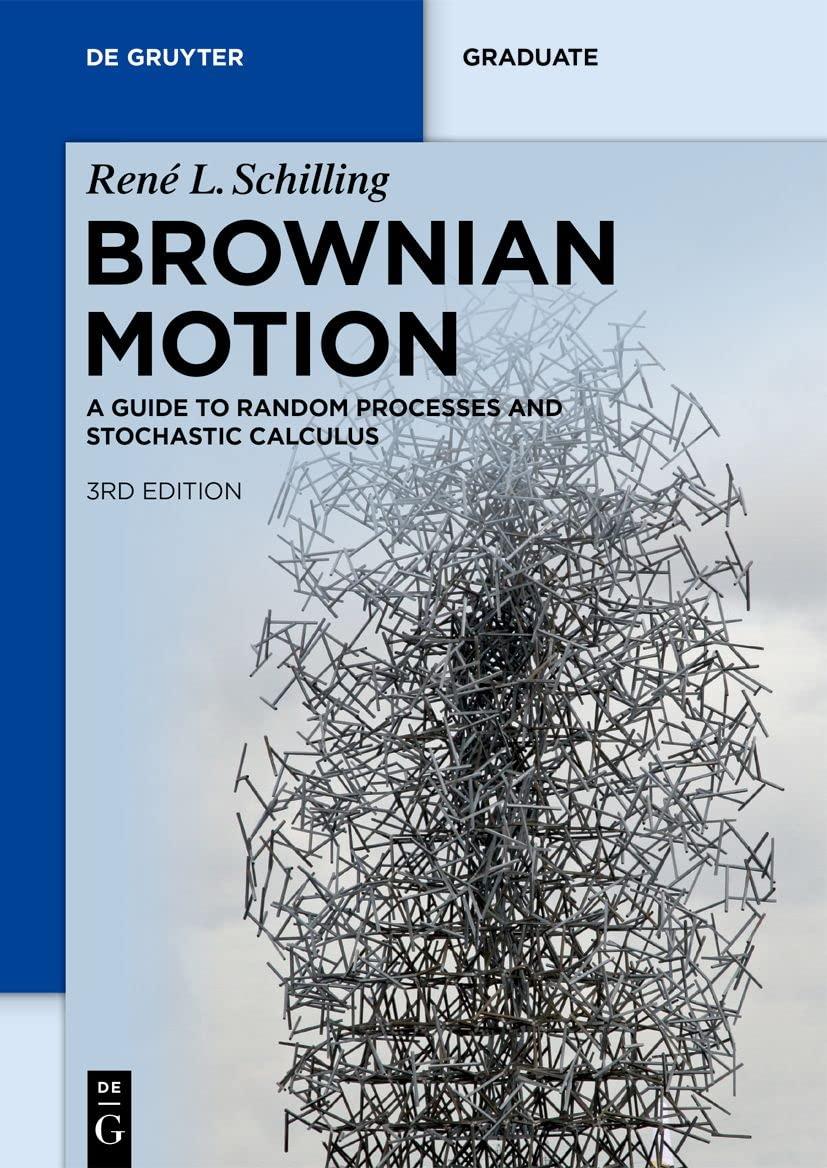Let (B=left(B_{t} ight)_{t in[0,1]}) be a (mathrm{BM}^{1}) and set (W=left(W_{t} ight)_{t in[0,1]}) where (W_{t}:=B_{t}-t B_{1}). a) Show
Question:
Let \(B=\left(B_{t}\right)_{t \in[0,1]}\) be a \(\mathrm{BM}^{1}\) and set \(W=\left(W_{t}\right)_{t \in[0,1]}\) where \(W_{t}:=B_{t}-t B_{1}\).
a) Show that \(W\) is a mean zero Gaussian process and find its covariance function.
b) Let \(0=t_{0}
\[\sqrt{2 \pi} g_{t_{1}}\left(x_{1}\right) \cdot g_{t_{2}-t_{1}}\left(x_{2}-x_{1}\right) \cdot \ldots \cdot g_{t_{n}-t_{n-1}}\left(x_{n-1}-x_{n}\right) \cdot g_{1-t_{n}}\left(x_{n}\right)\]
where \(g_{t}(x)=(2 \pi)^{-1 / 2} \exp \left(-x^{2} / 2 t\right)\) is the density of \(\mathrm{N}(0, t)\).
c) Show that the law of \(\left(W_{t_{1}}, \ldots, W_{t_{n}}\right)\) coincides with the law of \(\left(B_{t_{1}}, \ldots, B_{t_{n}}\right)\) conditioned that \(B_{1}=0\). Compare this with Exercise 2.9(b).
d) Show that the processes \(W\) and \(W^{\prime}:=\left(W_{1-t}\right)_{t \in[0,1]}\) have the same probability law.
Data From Exercise 2.9
![]()
Step by Step Answer:

Brownian Motion A Guide To Random Processes And Stochastic Calculus De Gruyter Textbook
ISBN: 9783110741254
3rd Edition
Authors: René L. Schilling, Björn Böttcher





